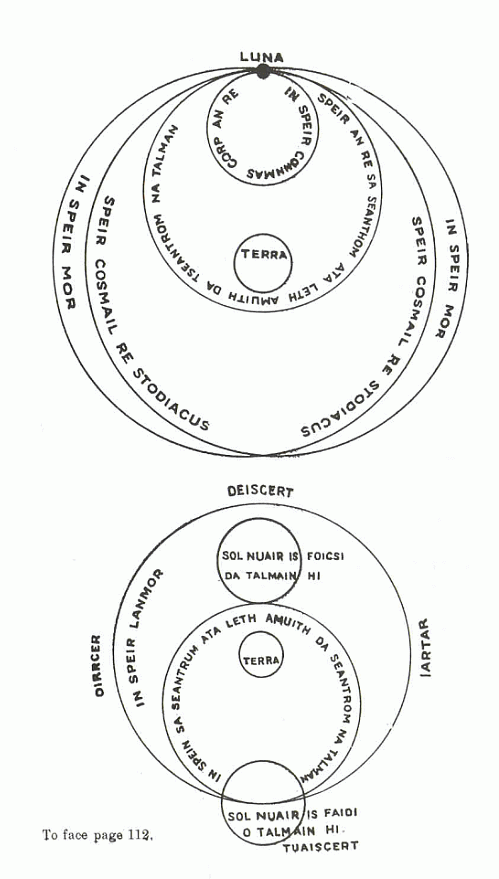
The learned relate that the moon has four spheres. The first of them is called the 'great sphere', and with its own excessive speed it carries the moon with it, making one revolution in a day and night around the world, and causes it to rise in the east and sink in the west in that course.
If this great sphere did not move the moon one course from the east of the world to the west in a day and a night, as I mentioned, the moon would be visible every day and every night without concealment from the time it would be at its prime in the west moving gradually eastward, until at last it would be in the middle of the month eastward, in the east of the world. At the setting then, it would be concealed by day and by night, until it would rise again in the west at its prime at the beginning of the next month. Thus the revolution of the great sphere I have mentioned, carries
The second sphere of the moon is called ‘the sphere like the sphere of the signs’. When it is in this sphere it is visible going into the signs and out of them for when it advances towards the southern signs it swerves from them, yet it never leaves the course of the sphere of the signs.
The third sphere of the moon is called ‘the eccentric sphere’, and portion of this is near the earth, and the other portion is very far distant from it, and on that account the moon in that sphere is at one time near the earth, and at another far from it; and the motion of that sphere is from the west to the east of the world.
In the body of that sphere is another small sphere, called ‘the sphere which revolves downwards to the moon’, and the sphere of the moon is firm and immovable in that sphere like a nail in a board. This little sphere, which is within that sphere in which the moon is fixed, moves eastwards, and when the moon reaches the top of the aforementioned sphere, it accelerates its course; and when it is at the bottom of it, it relaxes the same course and when it relaxes, it performs something of a backward revolution westwards as the other planets do, although that revolution is not
